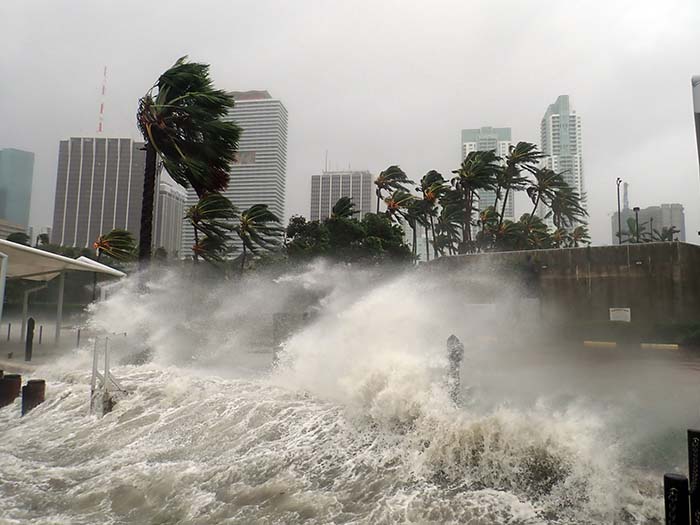Captive, parametric, and other alternative risk transfer tools will continue to be useful in the future.
Over the past several years, insurers have seen increases in speed on several lines. Exposure shifts, economic uncertainty and other factors are causing carriers to reduce their appetite for multiple risks in the commercial property and risk markets.
As the property market prices rise, they are experiencing a few lines.
Battered by an increasing number of natural disasters over the years, many property carriers are pulling back on their capacity. Recovery costs are also increasing. Supply chain delays, asset valuation gaps, rising interest rates and soaring construction materials are all driving up claims. Bob Nusslein, head of innovative risk solutions for the Americas with Swiss Re Corporate Solutions, estimates increases of 30-50% or more for insurers with heavy CAT exposure.
“In my career, I’ve never seen the property insurance market this tough,” Nusslein said. “He’s worked really hard over the last several years. Rates, especially for property insurance and Nat CAT risk, have increased dramatically. Retention is over, terms and conditions and policies are becoming more restrictive.
As markets tighten across multiple lines, insurers are turning to alternative risk transfer solutions to manage property and other risks. Captives, comprehensive stop loss coverages, parametric and multi-year, multi-coverage solutions are all coming in to help cover gaps in traditional policies and will likely remain a critical resource in risk managers’ toolboxes for years to come.
In today’s real estate market, insurers are taking on more risk.
In order to manage price increases in their property policies, many companies are carrying exposure that they may have once tried to transfer with the primary layer.
“They’re figuring out with their brokers how they can get a higher deductible or higher guaranteed retention, whether it’s in their captive,” Nusslein said.
Captives, a long-popular solution to auto-risk exposure, are once again seeing increased demand from insurers. “Some companies that don’t have captives are rushing to do that,” Nusslein said.
Companies hesitant to set up their own insurance company through a captive may look to virtual captive solutions. Virtual captives use the same financial mechanisms as their traditional counterparts, but the carrier partner manages the administrative entities, eliminating the need for a separate legal entity.
“A virtual captive allows an insured to fund the first event on the insurer’s balance sheet, just as they would with a structured captive,” Nusslin said. In fact, many use a virtual captive program as a temporary measure to gain more time to decide how to use and implement the captive.
Others are using comprehensive stop loss covers, either individually or in addition to their bonds. With total stop loss coverage, businesses receive insurance payments if total claims in a year exceed a certain amount. So, if an insured predicts that they will experience only one Nat CAT event and they experience two or three, the policy will kick in.
“Insured corporations can absorb the first loss, but probably not the second or third. We can provide comprehensive stop loss coverage to stop the bleeding on a second event or a third event by providing total loss coverage,” Nusslein said.
“Total stop loss coverage protects the insured against captives that erode capital and profits, or that weaken the firm’s risk-bearing capacity if the captive is not used. The insured is willing to cover more risk, but needs protection for that second or third event.
A year of parametrics?
In addition to retaining additional exposures, insurers are turning to parametric to fill in or fill gaps created by traditional commercial property policies. Parametric policies are paid using an index system. If a certain event occurs, an insured receives a predetermined amount of money.

Bob Nusslein, Head of Innovative Risk Solutions for the Americas, Swiss Re Corporate Solutions
Although it was a relatively unused form of insurance a few years ago, brokers and insurers are clamoring for parametric today.
“The last several years have been explosive. You’re seeing a lot of new entrants,” Nusslen said. “There’s a lot of knowledge. Companies, buyers and brokers are well-educated in parametric NAT CAT solutions.”
One of the reasons insurers turn to parametrics to manage property and Nat CAT risks is that the funds are unlimited. If a certain event occurs, an insured can use parametric insurance premiums to cover any losses, including costs associated with business interruption and sudden business interruption – an area where traditional policies struggle.
“Parametric coverage doesn’t require physical damage to pay like traditional insurance,” Nusslein said. “Time element vulnerabilities – like business interruption, cost overruns, cost acceleration – these things are covered by parametric programming without physical damage.
These policies are a great complement to traditional coverages: “We see traditional natural disaster insurance and parametric coverages working hand-in-hand,” Nusslin said.
“Loss is paid very quickly with parametric Nat CAT coverage because those rates are pre-agreed. Liquidity is important. Insureds should not tap lines of credit or use cash deposits to recover from a natural disaster.
Property and beyond: Multi-year, multi-coverage policies
Property insurance is not the only line of business where insurers have faced tough markets in recent years. Cyber, commercial trucking, general liability and many other lines have experienced market corrections over the past five years.
With so many lines struggling with rate hikes, some insurers may want to settle for multiple years of multi-coverage policies. Typically designed to cover a three-year period, multi-year, multi-coverage insurance solutions use a single limit to cover multiple risks.
These policies are smaller than they once were, Nusslein says, but there’s still demand from insurers: “They’re less prevalent than they used to be because more carriers are reducing their exposure appetite on US perils and other lines, making consolidation more likely.” Difficult,” he said.
“I think you’re going to see fewer and fewer broad multi-line bundled insurance programs with multi-year policy periods.”
While full-size mergers are becoming less common, some companies have found success by grouping a few different lines of the same policy into one policy.
“You may have property, Nate CAT and some related lines such as inland marine, stock issuance, fiduciary liability or EPLI,” says Nusslein.
Although alternative risk solutions such as captives, total stop loss coverages, parametric and multi-year, multi-coverage solutions are often sought by insurers to manage strong markets, many are finding value as prices soften. Nuslin expects these solutions to remain relevant for years to come.
“Structured solutions give insurers more flexibility,” he said. “We’re seeing companies retain the strategic solutions we’ve developed in both tight and soft insurance markets. They’ve become a strategic risk management tool.” &
